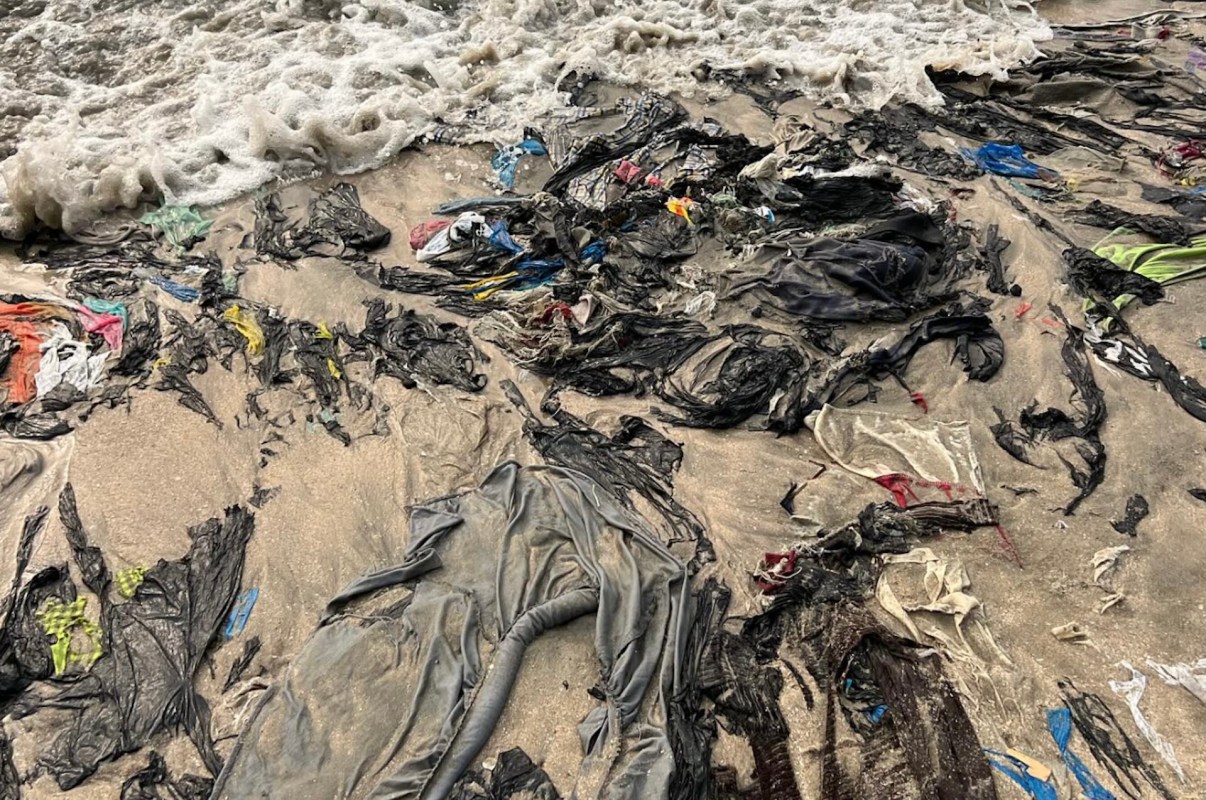Many are unaware that the fashion industry is a major contributor to waste and pollution, but one expert has shined a light on the ongoing issue.
What happened?
Fashion writer Alyssa Hardy shared a series of photos on Instagram from her recent trip to Accra, Ghana, where she explored how clothing waste impacts and pollutes the city. What she discovered was a damning amount of thrown-away clothes washed up on the city's beaches and other scraps that have damaging effects on the environment.
"Discarded donations piling up, causing issues with microplastics and worse due to the volume and quality," Hardy wrote in the caption.
Hardy, who is a veteran fashion journalist and author of the book "Worn Out," added that the issue affected the way she views the industry she once revered.
"Heading into fashion week with the same feeling I often have, but this month it feels especially sharp. I love to celebrate the art of fashion, support the creative minds of designers, and play with my own outfits as much as the next person," Hardy stated. "But what is the balance when it turns into celebrating consumerism with consequences as profound and insidious as a waste crisis that no brand participating seems to want to address?"
Fast fashion dumping grounds in Accra were also recently covered in the Max documentary "Brandy Hellville," about the highly criticized fast fashion company Brandy Melville. Hardy appeared in the documentary as an expert.
Why is this important?
Unfortunately, Hardy's discovery is nothing new. The United Nations reported in 2019 that the fashion industry is the second-biggest consumer of water and is attributed with causing about 2-8% of global carbon pollution.
A significant amount of used clothing often ends up in landfills or gets shipped to various countries around the world, including Ghana. In most cases, clothes are donated with the best of intentions, but the sheer volume can be overwhelming to the point that these countries struggle to manage the sudden increase, leading to environmental concerns and challenges.
For example, an "estimated 39,000 tons of unwanted clothes" shipped by fashion brands from Europe, Asia, and the Americas were found in Chile's Atacama Desert.
The heap was so high that it could be seen from outer space, according to Business Insider.
By purchasing a $44 Existing Image at 50 cm resolution, we can confirm the giant clothes pile in the desert of Chile exists and is growing. https://t.co/47SssKPdtI pic.twitter.com/RlfUSBWbu9
— SkyFi (@SkyfiApp) May 10, 2023
What can be done about this?
There are ways to decrease spending on fashion and reduce clothing waste. If you'd like to help, you can consider utilizing thrift stores and resale apps online to do secondhand shopping.
It's also important to identify and support circular fashion brands that focus on reducing waste through recycling and upcycling clothing and choosing higher-quality garments that last longer. There are also eco-friendly clothing brands and plastic-free alternatives for everyday products, which would help minimize environmental impact.
Hardy wasn't alone in her disappointment, as commenters had their eyes opened to an issue they didn't previously know existed.
"Your book expanded my mind so much when it comes to fast fashion so seeing this made my heart hurt," one user wrote.
Join our free newsletter for cool news and actionable info that makes it easy to help yourself while helping the planet.









